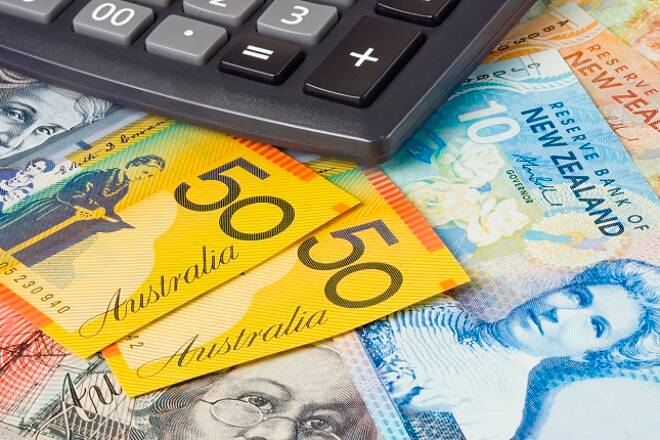Advertisement
Advertisement
AUD/USD and NZD/USD Fundamental Weekly Forecast – Aussie Unemployment Rate Should Set Tone
By:
Even though the Aussie and Kiwi were boosted by the news, I don’t think it was particularly bullish because the older tariffs remain in place, and a decision had not been made over additional U.S. tariffs scheduled for December.
The Australian and New Zealand Dollars finished higher last week as traders reacted to the positive news of a partial trade deal between the United States and China. The development helped change the trend on the daily chart, but the weekly trend is still pointing decisively lower. The price action suggests the moves were likely fueled by low-level short-covering by traders who bet on trade relations worsening, given the plethora of negative press for weeks ahead of last week’s renewed negotiations.
Last week, the Australian Dollar settled at .6793, up 0.0027 or +0.40% and the New Zealand Dollar finished at .6339, up 0.0024 or +0.38%.
Australian Dollar
Last week’s data out of Australia was weak and the currency was actually headed lower until late Thursday when speculation of a trade deal started to hit the newswires.
The week started with the AIG Construction Index coming in lower than expected. This was followed by an extremely weak Westpac Consumer Sentiment report and a report on Home Loans that missed the estimate.
The drop in the Westpac Consumer Sentiment report was particularly disturbing because the data was compiled after the Reserve Bank of Australia’s (RBA) three rate cuts. The report indicates Australian consumers have turned bearish on the RBA’s attempts to revitalize the economy as fears about the near-term economic outlook sapped their confidence.
The Westpac Bank index of consumer sentiment plunged to 5.5% in October, after slipping 1.7% in September. The index was down 8.6% from a year earlier, and at 92.8 indicated pessimists far outnumbered optimists. This was also the lowest level for the index since July 2015.
Typically, an interest rate cut boosts confidence particularly around consumers’ expectations for and assessments of their own finances,” said Westpac Chief Economist Bill Evans.
“In this survey these components of the index fell by 3.7% and 4.9% respectively. This may be because, despite the rate cut, assessments for the economy overall plunged by 6% (the twelve month outlook) and 9.1% (the five year outlook),” he added.
“Consumers are looking behind the reason for the rate cut and, arguably, the absolute level of rates and getting nervous.”
Weekly Forecast
Shorts covered last week after the U.S. and China reached the first phase of a substantial trade deal that delays tariff hikes that were to start on October 15. Phase one of the trade deal will be written over the next three weeks. Phase two of the deal will “start almost immediately” after the first one is signed, Trump said.
Even though the Aussie and Kiwi were boosted by the news, I don’t think it was particularly bullish because the older tariffs remain in place, and a decision had not been made over additional U.S. tariffs scheduled for December.
In other words, there is nothing in the first phase of the deal that suggests a global economic recovery is just around the corner. Furthermore, the short-covering we are witnessing will probably cap out once traders price in the suspension of the new tariffs that were to take place early this week.
This week, Australian Dollar traders will get an opportunity to react to the RBA Monetary Policy Meeting Minutes, Employment Change and the Unemployment Rate. If the Unemployment Rate then expect traders to begin pricing in another RBA rate cut before the end of the year.
In New Zealand, the key report is quarterly Consumer Inflation, it is expected to have risen 0.6%.
About the Author
James Hyerczykauthor
James is a Florida-based technical analyst, market researcher, educator and trader with 35+ years of experience. He is an expert in the area of patterns, price and time analysis as it applies to futures, Forex, and stocks.
Latest news and analysis
Advertisement
